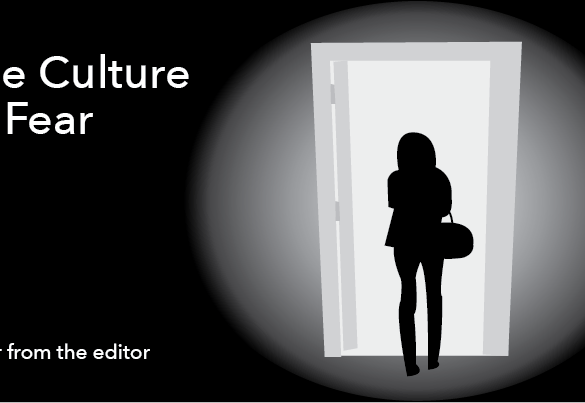This week, Ball Bearings explores the fears that drive our lives and shape our culture
I parked my car in the front row of the rest area parking lot and scanned the walkway in front of me. There were no other people around. It was a little after midnight in July of 2014, and I was driving home to southwestern Ohio from Muncie, Indiana. I didn’t want to leave the safety of my car, but I needed to use the restroom before driving for another hour.
Before stepping out of the car, I took the safety latch off my pepper spray and held it in my right hand. In my left, I held my phone with my thumb on my SafeTrek app–only needing to release my thumb to place an automatic call to the police.
I stepped out, locked my door, and started walking. That’s when I noticed the two men behind me.
I picked up my pace and made sure to walk in the glow of the street lights. I made it inside and locked myself in a stall of the women’s restroom before closing the SafeTrek app and securing the latch on my pepper spray. My adrenaline was soaring.
A 19-year-old woman alone at night, in a public rest area along a highway sounds like the beginning of a horror movie – and I didn’t want to be a victim. Like many others, I’ve been taught to be fearful of situations like this.
Ball Bearings’ first digital edition is titled “The Culture of Fear,” and with it, we explore the ways in which our culture is shaped and driven by fear. Whether it be fear of immigrants, the fear parents have for their children, the fear women have for their safety, or the fears minorities face daily, fear plays a large role in the culture we live in.
After addressing the fears our society has developed in our first digital edition, Ball Bearings will further explore the big issues that divide our culture – including guns, terrorism, and immigration. This digital edition will explore the complexities of these polarizing concepts, and the the psychological reasons behind our division.
Many of the problems we consider black and white have areas of gray in between that must be examined to be fully understood. This semester, we aim to find the human faces behind these topics to better understand the influence they have on all of us.




